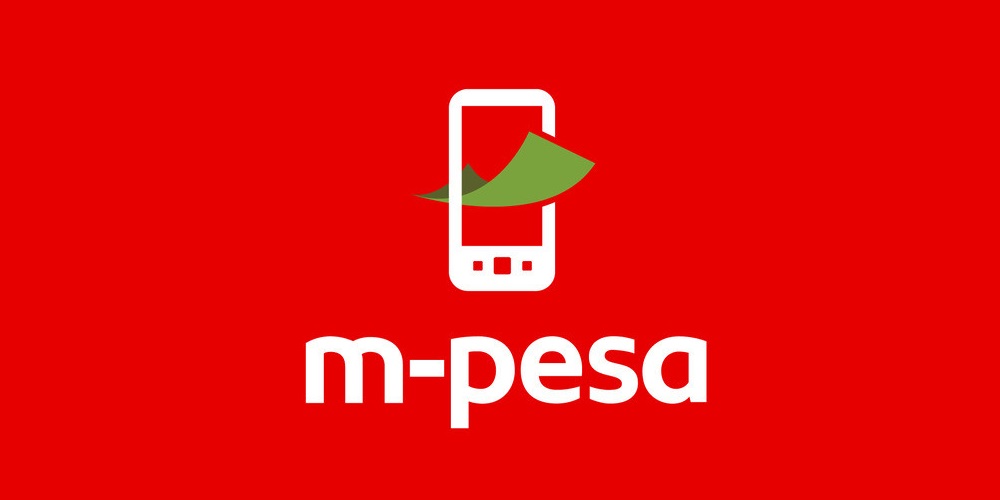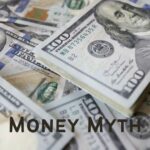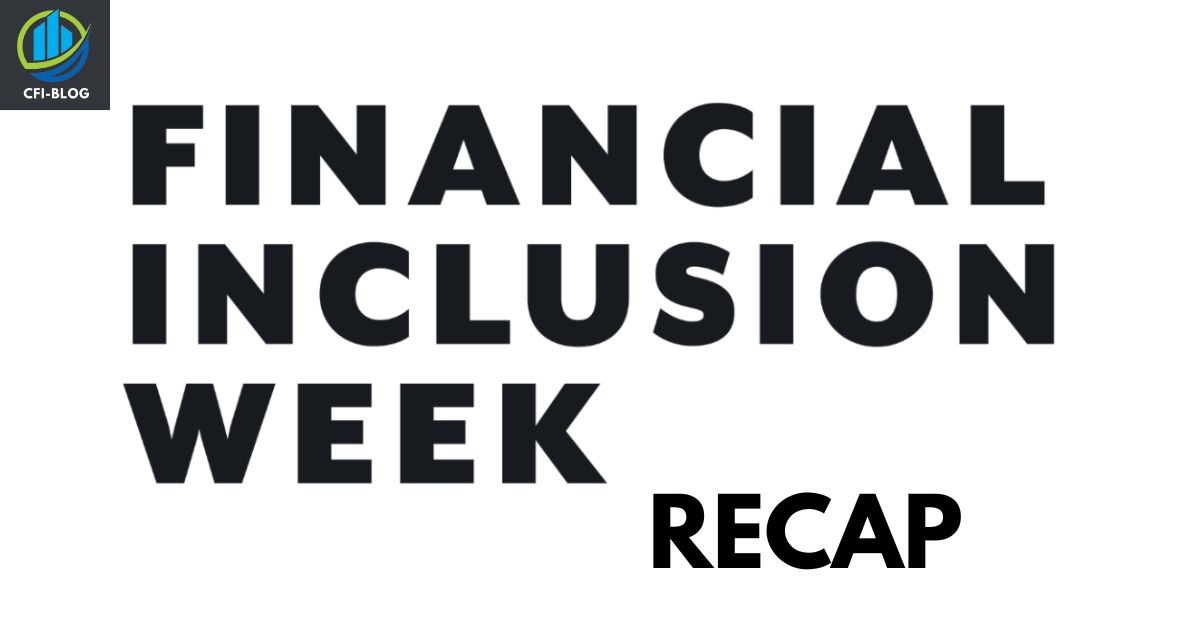This venture has a history. Under the supervision of the United Nations, a survey was conducted in Indonesia. The survey target was mainly women and micro and medium-sized businesses run by women. The main objective of this entire survey is to gauge the conditions and impact the Covid pandemic had on women and their businesses. The results were not good, to say the least. The survey revealed that the women barely stayed afloat and had fewer coping mechanisms than men.
Their business had no backup because there wasn’t any financial infrastructure to support women in the country. However, all were not lost. As the pandemic made many infrastructures and resources inaccessible, women moved to digital mediums and online financial platforms to run their businesses and maintain their condition in this arduous terrain of the global economy. However, Indonesian women are barely alone in this fight against financial struggle.
Even before the pandemic ushered in a global change in the industrial and economic scenario, automation was already disrupting labor markets and affecting low-income earners in the countries. Emerging markets have historically financially excluded women, who have been most affected brutally. During the pandemic, women have been forced out of the labor force to take care of household chores and stifled from economic growth. Marginalized communities not only lost jobs in the pandemic but were the most likely to get COVID and die.
Also, we need to consider the impact of climate change around the globe. Research indicated that global and per capita incomes are about to drop as much as 20% due to climate change. According to the World Health Organization, the coronavirus has infected over 88 million people and killed over 1.9 million. Hundreds and thousands of micro and medium-scale businesses have gone bankrupt and ceased production or service. Millions have been unemployed and didn’t receive anything regarding financial security.
Financial Inclusion | Banking Insights

World Bank has compiled a new index to gauge the global financial penetration scenario: a Global Financial Index or Global Findex. The index compiles more than 40 different parameters, including bank account holder adjusted for population, banking security, and overall financial penetration across 140 different nations in the world, and ranks them.
According to its data, 90% of the transaction account-holding population, which accounts for about 3.2 billion people around the globe, has opened a bank account. Of about the 721 million new transactional accounts that have opened from the year 2011 to the year 2014, most of them have a diverse portfolio of bank accounts, postal banks, microfinance accounts, stock portfolios, and credit unions.
Rich Dad Education, teamed up with Accion to promote banking services and concepts of financial inclusion to 2 billion more people. Banks are taking advantage of global innovations and expanding banking services to areas previously under-served. Advancements in payment technology enabled people to open bank accounts and millions more people followed the same way. Let us discuss this.
Bank’s Top Opportunities for Financial Inclusion
Amid the global technological and internet revolution, banks and other financial institutions have massive opportunities to develop infrastructure, establish communication and serve the previously under-served community. This approach includes multiple strategies:
- Building on digital and online payments like G2P (Government to People) for social security, pensions, and the private sectors such as consumer retail, online business, etc.
- Target under-served and under-banked areas through data collection and use those data sets to gauge their needs.
- Cross-selling the full extent of the services that the bank offers.
- Addressing the gap in usage by establishing financial capabilities.
- Establishing a digital banking ecosystem by building partnerships with other financial institutions.
- Focusing on online account opening with virtual identifications and for KYC requirements.
- Aligning all your infrastructure to online banking to benefit the underbanked and unbanked.
High Levels of Online Payment Adaptation
With Internet users exploding after the pandemic, the world has seen an explosion in online banking and digital payments. This is a massive opportunity for banks and other financial institutions like credit unions, microfinance banks, postal banks, investment banks, and credit card companies to promote banking and other financial services like loans and investments in stock portfolios.
Convenience in banking will lead to high amounts of deposits and an increase in banking assets. With the improvement in banking infrastructure, it will be easier for banks to dol out loans for businesses and education. Loans for businesses will create jobs, increase productivity and generate wealth, leading to higher living standards. Higher standards of living, in turn, will lead to financial inclusion. It is proven that the expansion of digital banking has improved financial conditions in most countries.
For instance, in Kenya, M-Pesa, a digital payment platform, has enabled the penetration of banking facilities and services for most of the nation’s people. In Brazil, the Bolsa Familia initiative has launched a digital payment platform to receive government funds such as social security and unemployment benefits into a bank account without using any middleman.
M-Pesa
Founded in 2007, M-Pesa is the brainchild of Vodafone’s Kenyan branch Safari. It has over 50 million bank accounts worldwide and is used widely across seven African nations with payment facilities that are secure, swift, and convenient. Users must register with an authorized agent, such as a mobile store owner, barber, or butcher.
Once the account has been set up, the account holder can deposit money and transfer money all across the country in the form of e-money. The transactions are entirely secure, and after registration, you will receive an SMS notifying you that your money has been transferred or received. The transaction is verified with a PIN code. It has been reported that M-Pesa users transact over $300 billion yearly in countries like Egypt, Ghana, Lesotho, Tanzania, etc.
How it is Helping in Financial Inclusion?
In a country like Kenya, which is heavily dependent on cash, M-Pesa is a potent disruptor. M-Pesa has managed to break through the stringent infrastructure absence and connectivity problems. However, that hasn’t stopped M-Pesa from scaling itself to penetrate the homes of 70% of Kenyans who now hold at least one account on M-Pesa and find it convenient to transfer money, receive pay or make payments. With over 13.5 million bank accounts under its belt and over 28,000 agents operating the services, the funds and transfers through M-Pesa are converted into e-money.
Vodafone and Safaricom acquired M-Pesa and completed the acquisition in 2019. The idea was to use this acquisition to accelerate M-Pesa’s growth trajectory. The acquisition gave the joint venture control over product development, digital infrastructure, support systems, and the brand. According to the CEO of Vodacom Group, Shameel Joosub, the acquisition will be a milestone for the M-Pesa brand. The management believes that the joint ownership will enable the payment platform to be ushered into the new age of brilliant, technologically advanced smartphone age coupled with artificial intelligence-based technology and machine learning tactics.
The outgoing CEO of Safaricom, Michael Joseph, has been quoted as being very excited about the new management, which he believes will open multiple avenues for the company. M-Pesa is the continent’s most prominent payment app, operating in over seven countries. The acquisition, said the former CEO, will consolidate the development of their payment platform, allowing for synchronization for the strategy to move forward.
M-Pesa | Detailed Analysis of its Benefits

The successful scalability of M-Pesa has been possible because of a few factors:
- Distance– It moves money regardless of the physical distance. The funds can be moved through distances from rural to urban and back without hindrance.
- Security– The transactions are encrypted and secure, ensuring no data leaks.
- Speed– The funds are transferred swiftly from one account to another almost instantaneously.
- Tracking– It leaves a digital footprint and makes it easy to track your transaction.
The survey indicates that the main attraction of M-Pesa is the distance through which it transfers money. Its functionality suggests that its ability to transfer money across distances without the need to cash physical money is the main reason people find it useful. The survey also indicates that this convenience enables Kenyans to use M-pesa as a substitute for physical money. Also, the feature that works in its favor is that the digital payment platform leaves a digital footprint for the user to track. This helps if you want proof of payment or do budget tracking.
According to a survey conducted by financial diaries, the average Kenyan transaction was about $90 per week. This number is baffling because it is still more than the money handled by middle-class, progressively cashless economies of the developed world. The survey further indicates that the split between business transactions, such as receipts for salary or wages, and household transactions, such as utilities and food, is approximately 50-50. For microentrepreneurs, the story gets a new dimension.
Not only do small and medium-sized businesses use M-Pesa to earn, but they also use it to pay wages and salaries and inventories to keep track of their payments and keep themselves on budget. However, M-pesa hasn’t fully embedded itself into the national economy. Cash is still king, as 94% of transactions are conducted through cash. The transactions are highly localized to urban areas and are limited to 1km 61% of the transaction is business transactions.
- Despite M-Pesa’s success, e-money makes up a small portion of the transaction as most of the transaction happens through cold hard cash.
- E-money contributes as low as 6% to GDP and 5.65% to transactions.
- 66% of transactions and 67% of the total value has been sent to a distance of 20km and above.
- 18% of the transactions and 22% of the value transactions have been sent to a person living in the same town or village.
- 79% of all transactions were spent on household expenditures such as groceries and utilities like phone and electricity bills.
- 5% of the household transactions were made to places more than 20km away.
- 9% of the transactions were made to people within a 1km radius of origination.
According to a report by financial diaries, M-Pesa has managed to secure a position among its user base as a trusted place to manage and store assets. However, vast volumes of transactions and cash outflows threaten cash management, preventing the accumulation of assets in M-Pesa. It has been established that M-Pesa connects family, relatives, and friends through its platform, which is a fantastic trust factor among its user base. Financial diaries also studied M-Pesa’s role in risk management. Among microentrepreneurs, the survey found that, during emergencies, people looked towards M-Pesa only 12% of the time.
However, during emergencies, their use of the payment platform increase drastically. A study found that 38% of all medical bills were paid through the money saved in M-Pesa. However, M-pesa doesn’t play any significant role in money retention. People generally use M-pesa to move money from one account to another and not to save them on the application. The study found that no one kept a considerable portion of the remittance available in the wallet.
Instead, it was frequently cleared out as new cash flow came in. From a consumer’s perspective, e-money builds trust between the buyer and the seller. The verification is not an issue as the M-Pesa is used as a cash substitute, and the transaction happens face to face.
Promoting Blockchain | ICICI bank and Stellar
ICICI and Stellar using blockchain is very welcoming news to the world of finance. One of the biggest, and most trustworthy private banks in India is partnering with a cryptocurrency company called Stellar, which has been doing the rounds since 2021. How is this welcome news? You will get to know. First, let us understand what a blockchain is.
ICICI and Stellar Collaboration

ICICI had started integrating and partnering with the blockchain platform Stellar since the time of demonetization and cash freeze in India. While the country was still reeling from the after-effects of an unprecedented economic decision, ICICI implemented this blockchain feature to target college and university students. According to Raj Choudhury, head of this initiative, this partnership will enable them to establish relationships with businesses they must be privy to. It saves costs and helps to conduct business.
Stellar or stellar lumen is one of the prominent players in the cryptocurrency and blockchain industry. Founded in 2014, it was created by Jed McCaleb and Joyce Kim, a lawyer. Stellar is an open-source blockchain platform with no owner at this point. As a publicly owned network, it handles millions of cryptocurrency transactions daily. Cryptocurrencies like bitcoin and Ethereum rely upon Stellar for their performance and transaction.
Since its founding, Stellar has processed over 2 billion transactions since its founding and holds over 6 million accounts on its platform. Stellar is decentralized and suitable for any cryptocurrency trading, which is done efficiently. Stellar has a native cryptocurrency called Lumen which they trade in a limited capacity. Stellar has another advantage of being an open-source platform, meaning that its source code is publicly available, and developers can come in and make changes to it to enhance the experience.
This is one of the reasons why ICICI bank is interested in partnering with Stellar. Stellar works as an accountant who keeps track of cryptocurrency transactions. Stellar’s decentralized system allows a network of computers to check and verify information repeatedly. Stellar also issues digital tokens for its consumers; anyone, including a financial institution like a bank, can apply for them on the platform.
A stellar token can be exchanged, traded with other platform users, and cashed in for euros, dollars, and pesos. The tokens are converted into tangible currency by an exchange pathway called a decentralized exchange (DEX).
Somaliland: ‘Mobile Money Sprinters’ Adapt to Local Conditions
Multiple money mobile sprinters adapt to local conditions in Somaliland, which is now undergoing multiple instabilities in different regions of the country. The country is one of the youngest nations on earth. Still, the nation is undergoing massive terrorist attacks by terrorist groups who have sporadically taken control of some regions and prohibited any semblance of law and order.
In such conditions, money sprinters and mobile payment platforms are becoming handy. Digital payment platforms have made people less reliant on physical money, thus making transactions easier, encrypted, and safe. Here are some of the mobile payment platforms which have captured people’s imagination:
Easypaisa
Founded in 2009, Easypaisa is the only payment platform in Pakistan that GSMA has approved. The company was founded on the principle of expanding banking services in areas that have been historically excluded financially. After 11 months of operations, the application and payment service company had over 100 million user bases. The transaction worth has reached $1.4 billion. It was a joint venture between Telenor technologies and Tameer bank. Then Telenor acquired Tameer bank.
Easypaisa had a substantial market share of 22%, but then regulations from the government, especially in the field of know your customer forms and other regulations, have hindered its growth. Easypaisa set up an offline registration process. The customer could use an Easypaisa agent to produce their national ID card. The agent, then, would take it from there. The model was highly profitable as their customer base, with 70% of the customers approving this method. The company has plans to direct customers to its mobile wallet service and other financial services.
Telesom ZAAD
This company had one of the prominent roles in recreating Somalia’s financial infrastructure after the war. Founded in 2009, Somalia’s telecom company and mobile network operator, Telesom, launched the country’s first online payment application called Telesom ZAAD. Considered one of the world’s most active mobile payment services, Telesom ZAAD records an average of 30 transactions per month, far above the global average of 8.5.
It is one of the 14 mobile payment services approved by GSMA, making it one of the world’s most successful. According to the global financial index compiled by the World Bank in collaboration with Gates Foundation, Somalia is one of the most active online finance markets in the world.
Telesom ZAAD is said to have a share of nearly 26% of one of the most lucrative online payment services. 32% of the population has been reported to have used Telesom ZAAD to pay utility bills like electricity, internet, grocery, taxes, and salary and wages. Telesom ZAAD does its distribution without any external agents, which is one of its unique qualities.
Telesom’s massive brand recognition among its masses helped it register its customers through its retail stores and enabled them to cash in and out whenever it felt convenient. Telesom diverted all its focus on making an active customer base, and it has yielded results. Over 70% customer base uses its service frequently.
Ecocash
Econet Wireless, a mobile network operator, has a virtual monopoly on the Zimbabwean telecom market. In 2011, the mobile operator turned to the digital payment market to provide you with EcoCash. Build to make rudimentary financial transactions like transferring money from one account to another.
After 18 months of launching, the mobile payment service has recorded a 2.3 million subscriber base and transaction base volume of over $200 million. Ecocash is respected for identifying fragility within the financial systems and aims to solve them. In a short time, Ecocash has managed to bridge the gap between formal and informal economies, decrease inequality and prevent discrimination and credit underwriting.
Frequently Asked Questions (FAQs)
Q1. What is the purpose of financial inclusion?
Financial inclusion is necessary for economic participation. More than 1.6 billion people have no access to banking services which can stifle business and stagnate productivity. We need a comprehensive framework to expand banking infrastructure to everyone in need.
Q2. What are the pillars of financial inclusion?
The pillars of financial inclusion are reducing inequality, establishing equitable banking facilities, improving financial literacy, establishing communication between the financial institution and customer, convenience of use, and using modern technology. These six pillars form the basic foundation of financial inclusion.
Q3. Who benefits from financial inclusion?
Financial inclusion uplifts people from poverty and provides economic growth and stability. Especially the vulnerable, like women of color, benefit from financial inclusion.
Conclusion
The modern global economy hasn’t been kind to the most vulnerable population on the planet, especially those who have been historically marginalized. But financial inclusion is possible even in such situations. Many countries have made improvements toward expanding financial services to the section of the population that previously did not have access to banking services. Women and marginalized groups have moved forward in becoming financially independent. All of these subjects were discussed by attendees at the financial inclusion week.
Addressing the importance of financial inclusion, William Jack stressed the issue of how the administrative state, civil society, and corporations can collaborate to bring about financial service expansion and financial inclusion into society. Women need to be given more entrepreneurial opportunities and educated in terms of financial literacy. During the webinar, he also discussed how equality could be brought about in society.
Author Profile

- Jonas Taylor is a financial expert and experienced writer with a focus on finance news, accounting software, and related topics. He has a talent for explaining complex financial concepts in an accessible way and has published high-quality content in various publications. He is dedicated to delivering valuable information to readers, staying up-to-date with financial news and trends, and sharing his expertise with others.
Latest entries
 BlogOctober 30, 2023Exposing the Money Myth: Financing Real Estate Deals
BlogOctober 30, 2023Exposing the Money Myth: Financing Real Estate Deals BlogOctober 30, 2023Real Estate Success: Motivation
BlogOctober 30, 2023Real Estate Success: Motivation BlogOctober 28, 2023The Santa Claus Rally
BlogOctober 28, 2023The Santa Claus Rally BlogOctober 28, 2023Build Your Team – the Importance of Networking for Traders
BlogOctober 28, 2023Build Your Team – the Importance of Networking for Traders

